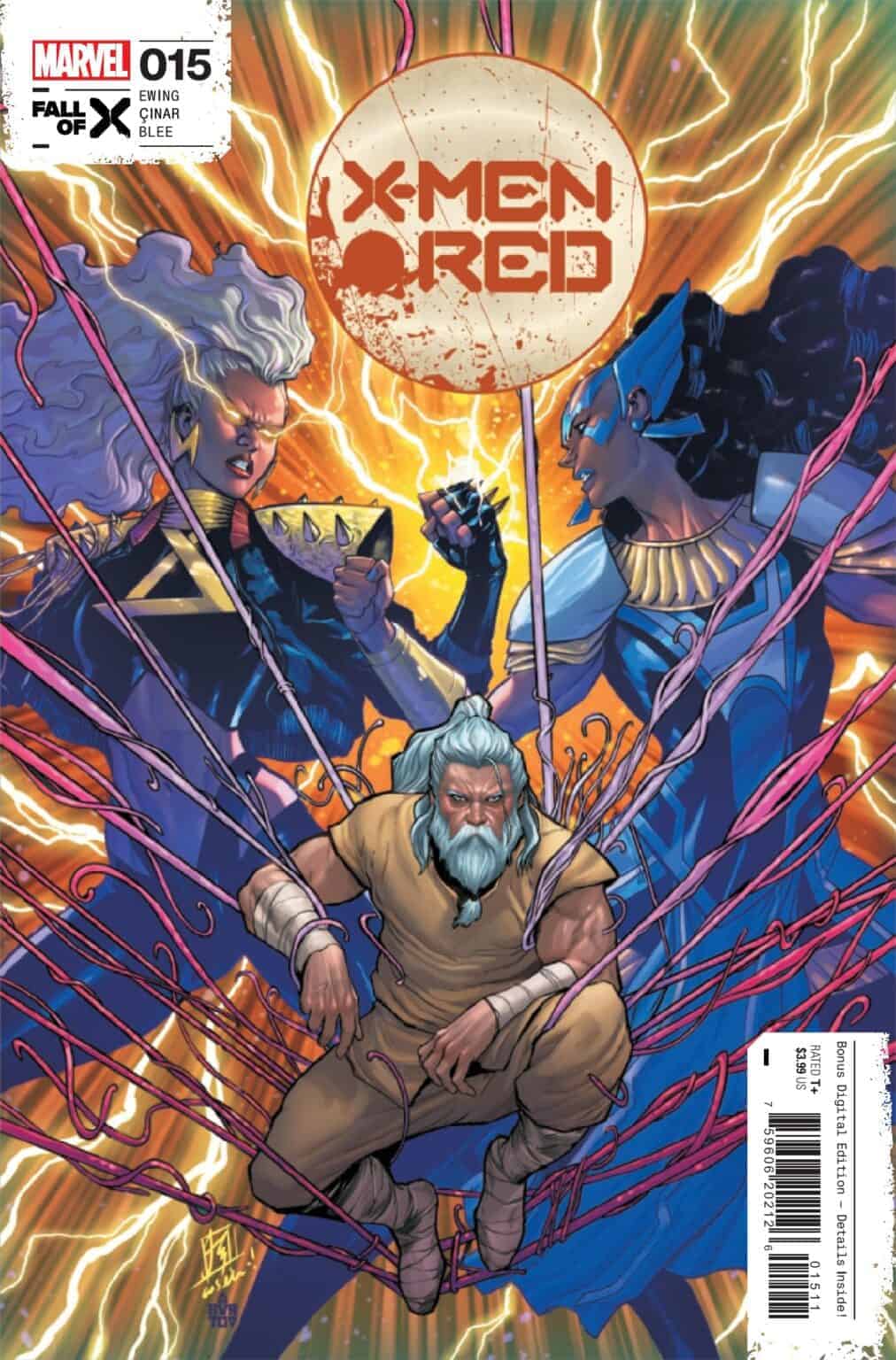X-Men Red #15

Recap
T.S. Eliot wrote, 'in my end is my beginning'. The Fisher King is about to find out exactly how relevant that verse is.
Review
The Arthurian legend of The Fisher King deals with a monarch who embodies his land. He’s wounded (often around the groin, in a manner that leads to impotence), and he cannot be healed until and unless he completes a heroic task. The injury to his person is echoed in the brokenness of his country, and the repair of the land depends on restoring his body. This King also happens to guard the Holy Grail — the cup of Christ, which grants healing and perfection to any who drinks of it. If you’ve seen Indiana Jones and The Last Crusade, you’ve met this King in the form of the old dude who tells the Nazi that he chose poorly right before the bad guy crumbles into dust.
Of course, the archetype of the wounded, impotent monarch who bears the balm that will heal the world is older than Christianity. Hephaestus (the Greek god of artisans and the mythological precursor to the X-Man Forge) also fits this particular bill. But in this instance, the character’s name was chosen with care.
This man has no name. He transformed his history into scar tissue. Unfortunately, this history carries within it the seed (that joke is intentional: you’ll get it after you read the issue) of the present. Nothing, be it a plant or person, can survive cut off from their roots.
In terms of narrative structure, this story is brilliantly done. The past and present are as enmeshed as Xylo’s worms within the Fisher King’s musculature. Ewing maintains a remarkable balance between present and past, allowing for surprisingly intense character moments even as the battle seethes and boils around his characters.
The one false note was struck by the nature of the Fisher King’s tragedy. It turns out that, after all this time, the motivating factor that fueled his quest was that he loved a woman whom Genesis murdered. This woman is brilliantly designed (more on this later). Still, she serves no purpose beyond supporting her husband, giving him children, and then dying for him, and through her death, she provides him with the motivation to take Genesis down. Genesis has, you see, committed a sin against property. She has stolen this woman, his property, providing readers with a reason to care about what happens to this man.
This reviewer is so very, very sick of fictional women being created and used exclusively to further the story of a man, sick of women being tortured, so that we readers feel empathy for the stories of men. There are other, better ways to humanize this nameless man than by inventing a woman to burn alive so that she might save him. It’s one of the oldest misogynistic tricks in the book. It transforms a woman, or the idea of women in general, into nothing more than motivation for the actions of men. And I expected better of Ewing.
Yildray Cinar’s art is nothing short of brilliant. His character designs, be they for a doomed lover whose upper face is a burning skull, a mutant mind-flayer, or a giant, malformed fish, are as imaginative as they are gorgeously rendered. Federico Blee’s color work makes the line work pop, adding to the story’s emotional weight without ever being a distraction or feeling out of place.
Aside from an unfortunate segue into sexist tropes, this story is a fascinating character study, perfectly balanced with a rip-roaring plot.
Final Thoughts
Aside from an unfortunate segue into the realm of sexist trope, this story is a deeply fascinating character study, perfectly balanced with a rip-roaring plot.
X-Men Red #15 The Fisher King
- Writing - 8.5/108.5/10
- Storyline - 9.5/109.5/10
- Art - 10/1010/10
- Color - 10/1010/10
- Cover Art - 9.5/109.5/10





